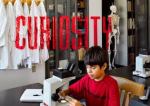Week 11: 5/14-5/18
The Measurement of Student Progress, better known statewide as the M.S.P., is the storm that hit our school last week. Classrooms up and down the corridor were silent or empty (students in the computer testing lab) due to the intense nature of this yearly standardized testing schedule. While I feel that testing is necessary the pressure students feel to attian high score and the added high stakes this tests carries for teachers creates an extremely charged school wide environment. Students were scared and nervous. For some the anxiety was even making them sick and for the teachers it was a challenge to simply encourage students to “relax and do their best” when the outcomes for testing have become such a hot bed of controversy.
In the multiage classroom that I am student-teaching in it was a challenging week for our 4th graders. All sixteen fourth grade students were required to take both the writing M.S.P.’s. This is comprised of both a narrative writing exam and an expository writing exam in the same week. While these are skills that the students have been fully prepared for all year, the reality of the actual testing day was intense. These students worked from 9:30 until 2:35, with some barely finishing. The process includes a pre-write, rough draft, and then a final draft to be transferred into the testing booklet. This would be a lot to ask of an adult. I was completely impressed with the tenacity and ambition that these students used to focus and complete these two days of testing. Meanwhile, in the classroom the seven 3rd and seven 5th graders reviewed concepts for the following week’s tests and completed projects that needed finishing. However, we could not really start anything new with half the class missing. An introduction to the revolutionary war was started when the fourth grade group was in class but the testing really did slow down momentum of the curriculum.
Next week our student will face the reading, math and science M.S.P.’s for another three days of testing. Our school has chosen to participate in the pilot program for online testing for these three tests. Because of this we have had to participate in multiple training sessions to ready the students and staff to better understand the test taking tools and strategies specific to online testing. While I think this is a more efficient way to test students who are digital natives they are being trained by adults who are more or less digital immigrants. This differentiated learning curve between student and teacher makes training for the test a necessary component of instructional time. As years progress, and the kinks of online testing get worked out, students and teachers will both be able to apply their personal schema from these testing and training days to future online testing, hopefully requiring less time. I am happy to know that I now have the knowledge, skills, and training to participate as a proctor in future M.S.P. testing sessions.


![IMG_0354[1]](https://sarahtaylorbportfolio.files.wordpress.com/2012/04/img_035412-e1334429970165.jpg?w=300&h=225)
![IMG_0387[1]](https://sarahtaylorbportfolio.files.wordpress.com/2012/04/img_03871.jpg?w=300&h=225)
![IMG_0390[1]](https://sarahtaylorbportfolio.files.wordpress.com/2012/04/img_03901.jpg?w=150&h=112)
![IMG_0394[1]](https://sarahtaylorbportfolio.files.wordpress.com/2012/04/img_039411.jpg?w=150&h=112)
![IMG_0361[1]](https://sarahtaylorbportfolio.files.wordpress.com/2012/04/img_03611.jpg?w=300&h=225)

![IMG_0332[1]](https://sarahtaylorbportfolio.files.wordpress.com/2012/03/img_03321.jpg?w=150&h=112)



![IMG_0330[1]](https://sarahtaylorbportfolio.files.wordpress.com/2012/03/img_03301.jpg?w=150&h=112)








